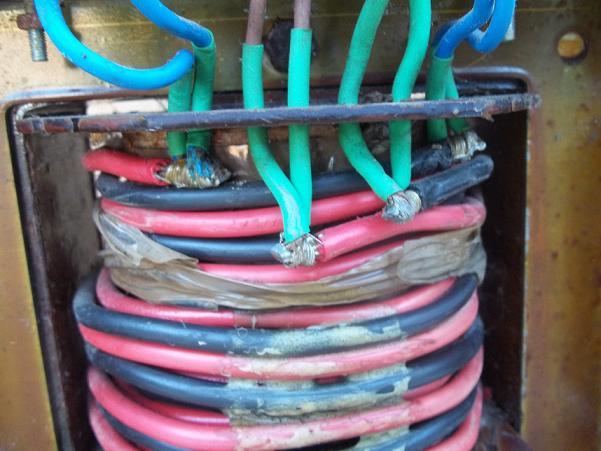To all of the answers that haven't gone off into the KV stratosphere. I need to calculate the windings for the secondary, also the cost, as it would be fairly thick wire, I imagine.
You could only directly calculate the required number of turns for the secondary if you knew the number of turns in the original secondary (and the voltage the transformer was designed to produce - which may well be marked on it) - if, for example, the present secondary had 1000 turns to produce a 2000V output, you would need about 12 turns to get a 24V output. However, since you would almost certainly have to totally destroy the present secondary to get it out, you're unlikely to be able to count the turns (even if you were very patient!).
In practice, therefore, you would probably have to determine the answer by experiment - remove the secondary and replace it temporarily with, say, 5 or 10 turns (of any insulated wire) and measure what voltage you get. That will give you the "turns/volt", from which you could calculate the required number of turns for your desired output voltage. For example, if 10 turns gave you 18 volts and you wanted 24V then the number of turns required would be about (10 x 24 / 18 ), namely 13.3 turns, so you would probably use 13 or 14. Then remove the temporary secondary and replace with one with adequately fat wire for the current you will be talking about.
If you've done it before, is it hard to feed the wire through the loop, while keeping the insulation in tact?
With the small number of turns you're likely to need, it should not be a problem - I would think the main problem would be in removing the present secondary without damaging anything else (like the primary!) - some of the on-line descriptions talk about using an angle grinder to remove the secondary!! If you Google "rewind microwave transformer" (without the quotes) you will find lots of stories, and some videos, of people who have done more-or-less what you want to do, often to create transformers for welders
I've yet to look inside the microwave to make sure that the transformer will lend itself to being rewound.
That could be an issue, but the on-line articles and photos/videos seem to suggest that it's usually possible. The material BAS linked to suggests that there are only about 4 different manufacturers of such trannys in the world, so they are probably all very similar.
Hope that helps, but I still do wonder whether you really should be doing this!
Kind Regards, John





